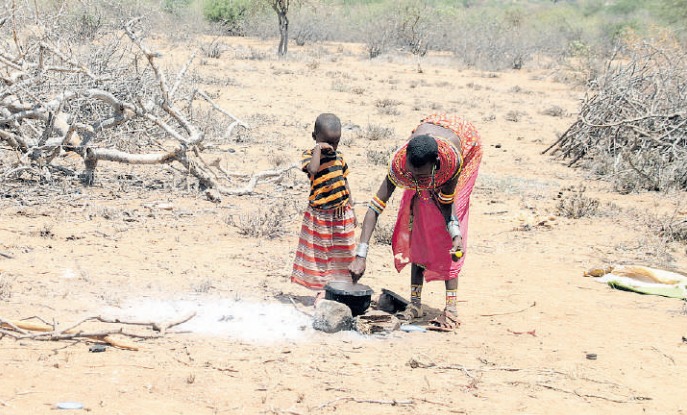

At least six million Kenyans have minimally adequate food consumption but are unable to afford some essential non-food expenditures without engaging in stress-coping strategies.
This assessment is contained in the latest update by Food Security and Nutrition Working Group For East and Central Africa Region.
The report released on June 26, shows that 6,587,550 Kenyans are stressed, according to the Integrated Food Security Phase Classification, or IPC, Phase 2. It also shows 2,531,700 Kenyans are in crisis (IPC Phase 3).
The IPC Acute Food Insecurity classification provides strategically relevant information to decision makers.
It focuses on short-term objectives to prevent, mitigate or decrease severe food insecurity that threatens lives or livelihoods.
In particular, the IPC Acute Food Insecurity classification differentiates between different levels of severity of acute food insecurity.
The classification has five distinct phases. These phases are: 1-Minimal/ None, 2-Stressed, 3-Crisis, 4-Emergency and 5-Catastrophe/Famine.
Each phase has distinct implications for where and how best to intervene and therefore influences priority response objectives.
The report shows 291,650 Kenyans are in emergency, while 2,823,350 are in crisis.
“Conflict and climate-induced displacement fuel food insecurity across the region in countries like Sudan, South Sudan, Somalia, Ethiopia, Uganda, DRC, Central African Republic,” the report reads.
“Conflict and displacement remain major drivers of food insecurity in the East Africa region, disrupting agricultural production, markets functionality and livelihoods.”
The report said food and nutrition security situation remains dire in East and Central Africa.
“As of June 2025, about 721,000 were in IPC Phase 5 (Famine/Catastrophe), 12 million under Phase 4 (Emergency) and 29 million in Crisis phase in the IGAD countries and the overall IPC Caseload (10 countries) – 73 million (IPC Valid analysis),” the report reads.
The report indicates that in coming months (lean season in many countries), food insecurity, driven by conflict, forced displacement, economic challenges, and climate hazards are expected to worsen despite forecasts of average to above-average rains. Improved precipitation may boost livestock production, benefiting pastoralist and agro-pastoralist communities.
The report said protracted and escalating conflicts in Eastern DRC, Sudan, South Sudan, Ethiopia, Somalia and Central African Republic, along with displacement and economic deterioration (inflation, currency devaluation), are worsening food security and humanitarian conditions.
The narrowing humanitarian space limits aid delivery, data collection and assessment needed for evidence-based response and decision-making, the report indicates.
Multiple, compounding hazards — alongside shifting donor priorities — underscore the urgent need for coordinated, targeted action.
“A balanced approach that integrates emergency aid with long-term development is essential to address immediate food, health and WASH (Water, Sanitation and Hygiene) needs while building lasting resilience,” the group says.
















